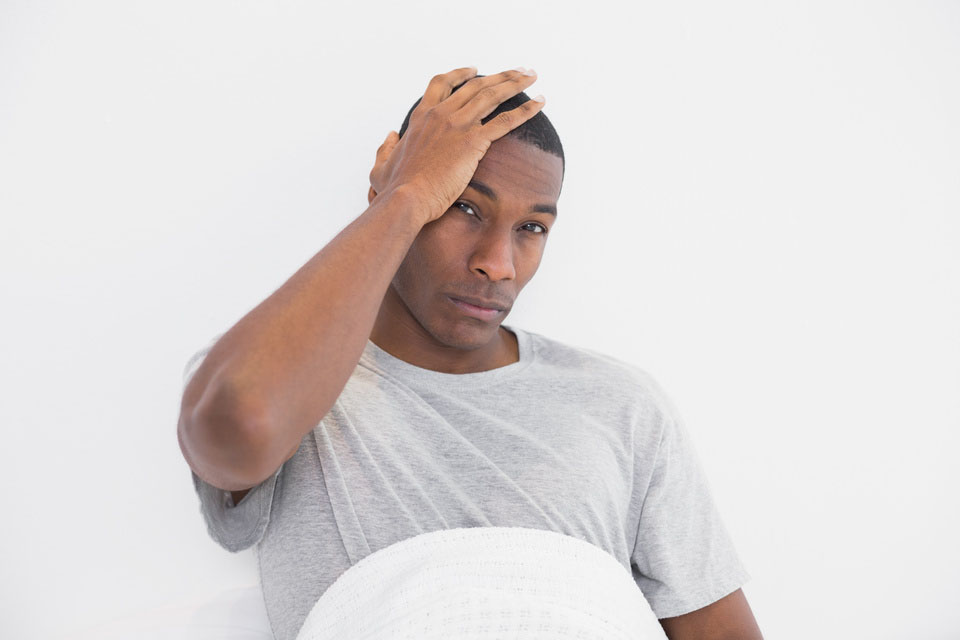Cluster headaches are sometimes referred to as the “suicide headache” because the pain can be so severe. They are rightfully named because they tend to occur in “clusters” for days or weeks at a time. They typically cause severe pain which lasts from 30 minutes to two hours, then diminishes or disappears. They can recur as frequent as a few minutes to hours or even up to a day or two later. Four or more cluster attacks may occur in one day, and these attacks can strike every day for weeks or months before going into a type of remission. During remission, no headaches occur for months (and sometimes, even years).

Cluster headaches are not something routinely dealt with in a physical therapy setting as the cause of the headache is typically not mechanical, nor is it associated with a trigger that would be amenable to physical therapy treatment. These headaches can be very frustrating as the cause of the headache is not entirely known which makes treatment difficult. In fact, experts are not entirely sure, but believe that the headaches are in some way associated with the hypothalamus (an area of the brain that controls body temperature, hunger, and thirst, and is associated with our internal biological clock).
Although cluster headaches are one of the most painful types of headaches, they are non-life threatening and rare (in general) when compared to other types of headaches. Cluster headaches are more common in men. People of African ancestry are twice as likely to suffer from cluster headaches when compared to Caucasian people. Cluster periods may be consistent and seasonal. For example, they may occur every spring or every fall.
Most people have episodic cluster headaches. In episodic cluster headaches, the headaches occur for one week to a year, followed by a pain-free remission period that can last as long as 12 months before another cluster headache develops.
Cluster Headache Symptoms include:
- A headache that typically begins several hours after falling asleep and wakes you up at night.
- You may initially experience a warning signal with a mild, aching sensation on one side of the head.
- Nasal congestion.
- Flushed face.
- Severe pain that lasts minutes to hours which then dissipates only to repeat later that day or the next.
- Pain is typically associated around one eye and/or one side of your head, but it can radiate to other parts of the head and neck area.
- Excessive restlessness.
- Forehead and facial sweating.
- Redness in the same eye as the headache pain.
Treatment for Cluster Headaches
Unlike many other forms of headaches, cluster headaches have only a few known triggers. Learning to avoid these triggers is an important for prevention and in order to extend periods of remission. Consuming alcohol, experiencing a sudden rise in temperature, and exercising in hot weather are known to trigger attacks. In addition, so can the medication nitroglycerin.
Management of cluster headaches is typically through a neurologist. Medication is typically used to help to manage symptoms. Opioids and other pain relievers are often used. As with migraine suffers, medications from the Triptan family are utilized as well as a medication known as Octreotide, which is an injectable synthetic version of the brain hormone somatostatin.
Local anesthetics such as lidocaine are often given intranasally through nose drops or a spray and seem to be effective. Dihydroergotamine is also given intranasal. Other medications potentially used include:
- Calcium channel blockers
- Corticosteroids, such as prednisone
- Lithium carbonate
Some have found that dosing with melatonin is also helpful in reducing the frequency of headaches.
Besides medication, oxygen therapy is frequently utilized as a form of treatment. This type of therapy involves inhaling 100% oxygen through a mask at a high rate of at least 12 liters a minute. The benefits are usually felt within 15 minutes of starting the treatment. For more information and a summary of the research on oxygen therapy and headaches, please refer to Is Oxygen Therapy Effective for Anything?
A nerve block is another treatment to consult with your physician about. A nerve block is performed by a physician who would inject a numbing agent and corticosteroid around the occipital nerve in the back of your head.
Cluster headaches require treatment from a qualified medical specialist such as a neurologist. If you or a loved one suffers from this condition, please seek treatment assistance right away.
Do you or a loved one suffer from cluster headaches? If so, which treatments have worked for you? Please share below.
If you have a question that you would like featured in an upcoming blog post, please comment below or submit your question to contact@thePhysicalTherapyAdvisor.com. Be sure to join our growing community on Facebook by liking The Physical Therapy Advisor!
Disclaimer: The Physical Therapy Advisor blog is for general informational purposes only and does not constitute the practice of medicine or other professional health care services, including the giving of medical advice. No health care provider/patient relationship is formed. The use of information on this blog or materials linked from this blog is at your own risk. The content of this blog is not intended to be a substitute for professional medical advice, diagnosis, or treatment. Do not disregard, or delay in obtaining, medical advice for any medical condition you may have. Please seek the assistance of your health care professionals for any such conditions.
